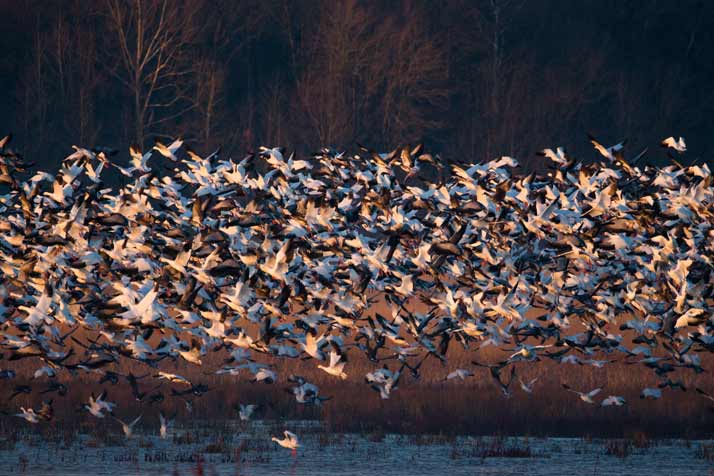(Other names: fowl cholera, avian hemorrhagic septicemia, avian pasteurellosis)

Description
Avian cholera is a highly contagious bird disease caused by the bacterium Pasteurella multocida. Outbreaks typically occur in the fall and winter months and can result in mortality events 6-12 hours after infection; more commonly, deaths occur 24-48 hours after infection. Avian cholera likely originated in the United States in the late 19th century but was not widely reported until the 1940s in Texas and California. In the 1970s, reports of large waterfowl mortalities cause by avian cholera increased significantly. Since then, outbreaks have been reported throughout North America, including Indiana. In total, avian cholera is known to have infected more than 100 wild bird species.
Transmission
The avian cholera bacterium enters the bird’s body through mucus membranes, such as those in the nose and mouth. It can also enter through cuts or abrasions. Diseased and dead birds with avian cholera shed the bacterium in the environment for several weeks after an outbreak. Avian cholera is likely maintained in bird populations by disease carriers that carry the pathogen without becoming sick. Wild birds primarily become infected through bird-to-bird contact, contaminated food or water, scavenging, and inhalation of particles. Although it is likely that all birds can contract avian cholera, ducks, geese, and swans are more often infected than other bird types. Birds that scavenge diseased carcasses, such as crows, gulls, and eagles, are also commonly infected.
Clinical signs
Die-offs happen so rapidly that early warning signs are often difficult to detect. Avian cholera can occur at any time of the year but is reported most often during the spring and winter months. In sick birds, lethargy, convulsions, difficulty breathing, erratic behavior (swimming in circles), nasal discharge, matted or soiled feathers, and bloody or oddly colored feces are signs of infection. Upon necropsy, hemorrhaging is sometimes found around the heart muscle and gizzard. White and yellow spots may also be present on the liver.
Wildlife Management Implications
Avian cholera outbreaks primarily result in losses of waterfowl. Some areas see recurring avian cholera outbreaks and associated mortality events over several years. Outbreaks do not negatively affect entire populations, but avian cholera can cause high mortality events in localized areas. Timely detections of outbreaks are important for effective diagnosis and monitoring of its presence in Indiana. If you see birds exhibiting signs of avian cholera or find multiple dead birds in a single area, please report the event using our Sick and Dead Wildlife Reporting tool.
Human Health Significance
Avian cholera is not considered contagious to humans. Nevertheless, when handling sick, injured, or dead animals, always take appropriate safety precautions and properly dispose of animal carcasses. Wear gloves, wash hands afterward, and work outdoors or in a well-ventilated area when possible. Even though avian cholera does not pose a serious risk to human health, the meat from an animal suspected of having the disease should not be consumed.
Additional Resources
Friend, M., Franson, J. C., & Ciganovich, E. A. (Eds.) 1999. Field manual of wildlife diseases: general field procedures and diseases of birds. US Geological Survey. “Avian Cholera”, 75-92.
Samuel, M. D., R. G. Botzler, and G. A. Wobeser. (Eds.) 2007. Infectious disease of wild birds. Blackwell Publishing, Ames, Iowa, USA. “Avian Cholera,” 239 – 269.

